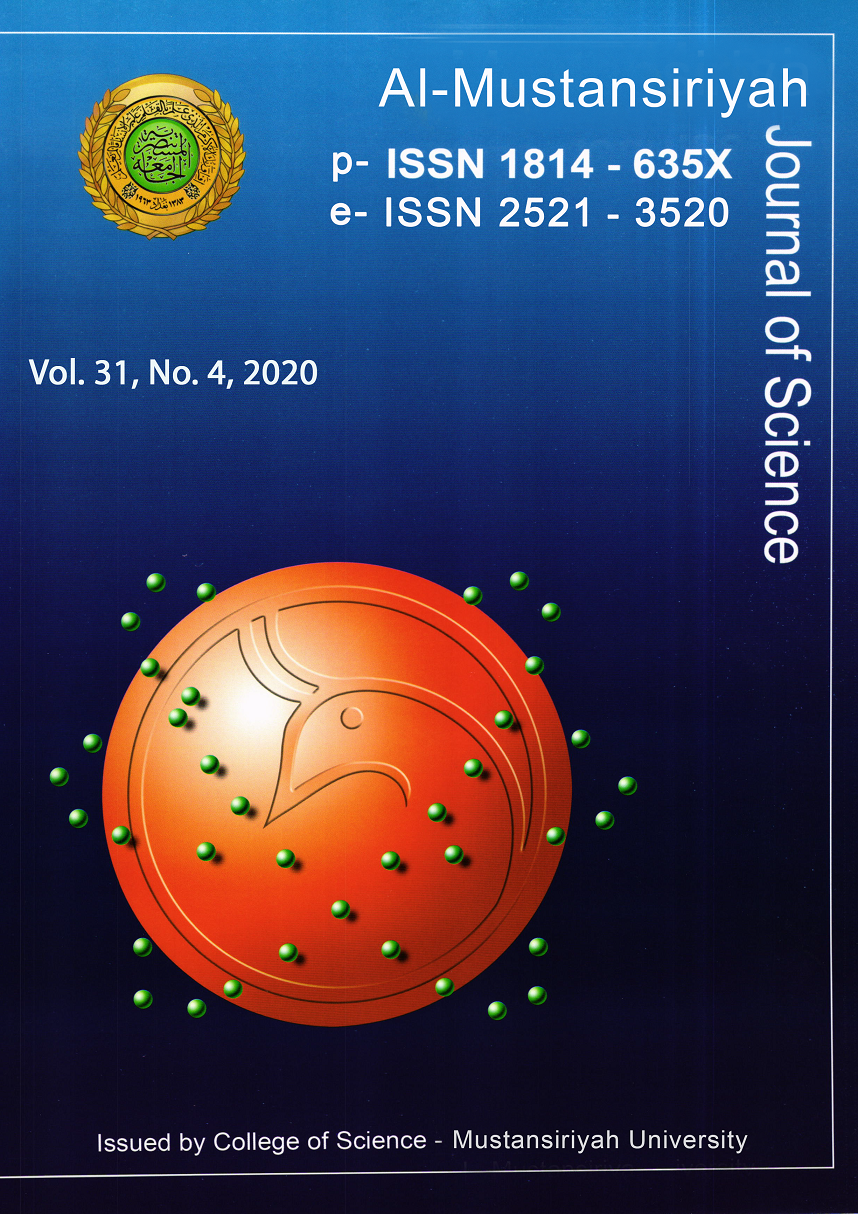Classification the Mammograms Based on Hybrid Features Extraction Techniques Using Multilayer Perceptron Classifier
DOI:
https://doi.org/10.23851/mjs.v31i4.902Keywords:
Keywords, Breast cancer, Digital Mammography, , A texture feature, Mutual Information (MI), Classification, MLP classifier.Abstract
Cancer of the breast is one of the world's most prevalent causes of death for women. Early and efficient identification is important for can care choices and reducing mortality. Mammography is the most effective early breast cancer detection process. Radiologists cannot however make a detailed and reliable assessment of mammograms due to fatigue or poor image quality. The main aim of this work is to establish a new approach to help radiologists identify anomalies and improve diagnostic precision. The proposed method has been applied through the implementation of preprocessing then segmentation of the images to get the region of interest that was used to find a texture features that were calculated based on first Order (statistical features), Gray-Level Co-Occurrence Matrix (GLCM), and Local Binary Patterns LBP (LBP). In the features selection phase mutual information (MI) algorithm is applied to choose from the extracted features collection suitable features. Finally, Multilayer Perceptron has been applied in two stages to classify the mammography images first to normal or abnormal, and secondly, classification of abnormal images into benign or malignant images. This method was implemented and gave an accuracy of 92.91 % for the first level and 93.15% for the second level classification.Downloads
References
Bray, Freddie, et al. "Global cancer statistics 2018: GLOBOCAN estimates of incidence and mortality worldwide for 36 cancers in 185 countries." CA: a cancer journal for clinicians 68.6 (2018): 394-424.
Qiu, Yuchen, et al. "An initial investigation on developing a new method to predict short-term breast cancer risk based on deep learning technology." Medical Imaging 2016: Computer-Aided Diagnosis. Vol. 9785. International Society for Optics and Photonics, 2016.
Wang, Lulu. "Early diagnosis of breast cancer." Sensors 17.7 (2017): 1572.
Maitra, Indra Kanta, Sanjay Nag, and Samir Kumar Bandyopadhyay. "Technique for preprocessing of a digital mammogram." Computer methods and programs in biomedicine 107.2 (2012): 175-188.
Makandar, Aziz, and Bhagirathi Halalli. "Pre-processing of mammography image for early detection of breast cancer." International Journal of Computer Applications 144.3 (2016): 0975-8887.
Berbar, Mohamed A. "Hybrid methods for feature extraction for breast masses classification." Egyptian informatics journal 19.1 (2018): 63-73.
Ramadan, Saleem Z. "Methods Used in Computer-Aided Diagnosis for Breast Cancer Detection Using Mammograms: A Review." Journal of Healthcare Engineering 2020 (2020).
Cheng, Heng-Da, et al. "Automated breast cancer detection and Saeed, Enas Mohammed Hussein, and Hayder Adnan Saleh. "Pectoral Muscles Removal in Mammogram Image by Hybrid Bounding Box and Region Growing Algorithm." 2020 International Conference on Computer Science and Software Engineering (CSASE). IEEE, 2020.
Hussain, Alyaa, Alaa Noori Mazher, and Asraa Razak. "Classification of Breast Tissue for mammograms images using intensity histogram and statistical methods." Iraqi Journal of Science 53.5 (2012): 1092-1096.
Hlaing, K. Nyem Nyem. "First order statistics and GLCM based feature extraction for recognition of Myanmar paper currency." Proceedings of the 31st IIER International Conference, Bangkok, Thailand. 2015.
Harefa, Jeklin, A. Alexander, and M. Pratiwi. "Comparison Porebski, Alice, Nicolas Vandenbroucke, and Ludovic Macaire. "Haralick feature extraction from LBP images for color texture classification." 2008 First Workshops on Image Processing Theory, Tools, and Applications. IEEE, 2008.
Nosaka, Ryusuke, Yasuhiro Ohkawa, and Kazuhiro Fukui. "Feature extraction based on co-occurrence of adjacent local binary patterns." Pacific-Rim Symposium on Image and Video Technology. Springer, Berlin, Heidelberg, 2011.
Vasantha, M., V. Subbiah Bharathi, and R. Dhamodharan. "Medical image feature, extraction, selection, and classification." International Journal of Engineering Science and Technology 2.6 (2010): 2071-2076.
Al Mutaz, M. Abdalla, Safaai Dress, and Nazar Zaki. "Detection of masses in digital mammogram using second-order statistics and artificial neural network." International Journal of Computer Science & Information Technology (IJCSIT) 3.3 (2011): 176-186.
Al-Ani, Ahmed, and Mohamed Deriche. "Feature selection using mutual information based measure." Object recognition supported by user interaction for service robots. Vol. 4. IEEE, 2002.
Rouhi, Rahimeh, et al. "Benign and malignant breast tumors classification based on region growing and CNN segmentation." Expert Systems with Applications 42.3 (2015): 990-1002.
Alamin, Ibrahim Mohamed Jaber, W. Jeberson, and H. K. Bajaj. "Improved framework for breast cancer detection using hybrid feature extraction technique and ffnn." International Journal of Advanced Research in Artificial Intelligence 5.8 (2016).
Sheba, K. U., and S. Gladston Raj. "An approach for automatic lesion detection in mammograms." Cogent Engineering 5.1 (2018): 1444320.
Mostafa, Shaimaa, et al. "Breast Cancer Detection Using Polynomial Fitting Applied on Contrast Enhanced Spectral Mammography." 2019 International Conference on Innovative Trends in Computer Engineering (ITCE). IEEE, 2019.
Salman, Nassir H., and Semaa Ibrahim M. Ali. "Breast Cancer Classification as Malignant or Benign based on Texture Features using Multilayer Perceptron." International Journal of Simulation--Systems, Science & Technology 20.1 (2019).
LI, Shenglan, et al. "Performance evaluation of a CAD system for detecting masses on mammograms by using the MIAS database." Medical Imaging and Information Sciences 18.3 (2001): 144-153.
J Suckling et al. "The Mammographic Image Analysis Society Digital Mammogram Database Exerpta Medica." International Congress Series 1069 (1994) pp375-378. Available online: http://peipa.essex.ac.uk/info/mias.html
Downloads
Key Dates
Published
Issue
Section
License
(Starting May 5, 2024) Authors retain copyright and grant the journal right of first publication with the work simultaneously licensed under a Creative Commons Attribution (CC-BY) 4.0 License that allows others to share the work with an acknowledgement of the work’s authorship and initial publication in this journal.






















